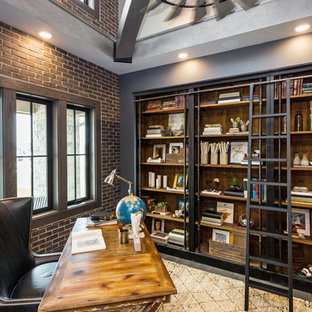The Utilitarian Charm of English Garden Design for Cottages
 The English cottage garden is a style that is in re-discovery today. As in every successful revival, the new version improves on tradition with new insights and ideas. The English garden designed after the cottage style has been around for as long as there have been cottages in England. Of course, up until relatively recently, they weren’t considered a style of English garden design at all. It’s just that their beauty caught on with the gardening writers of the country after a while. People began to notice that the traditional English garden design used in poor cottages across the country really possessed a lot of excellent gardening know-how and aesthetics to hand down.
The English cottage garden is a style that is in re-discovery today. As in every successful revival, the new version improves on tradition with new insights and ideas. The English garden designed after the cottage style has been around for as long as there have been cottages in England. Of course, up until relatively recently, they weren’t considered a style of English garden design at all. It’s just that their beauty caught on with the gardening writers of the country after a while. People began to notice that the traditional English garden design used in poor cottages across the country really possessed a lot of excellent gardening know-how and aesthetics to hand down.
To look at the traditional English garden design for cottages, one thing is clear. The humble gardener always fills every space available in his garden with every useful plant he can get his hands on. The most useful kitchen garden plants are the ones that come first – fruit, vegetables and herbs. If blooming plants are found clinging to all kinds of places in an oddly recognizable way in the traditional English cottage, it’s because these enter the garden in a supporting role – flowers and all of the herbs are always brought in as a way to fight pests with. And sometimes, to help supply the family medicine cabinet.Yarrow, for instance can help fight a fever.
The traditional English garden design in cottages was one of a recognizable kind of chaos. Rambling roses would be all over the house, cabbages, Larkspur, gooseberries and poppies would always line all the garden paths, and hollyhocks would go along the boundary walls. The cottage garden was always so full of color and so delightful that there was a charm there in the way everything seemed to be on top of everything else. It was the very image of domestic bliss, and it’s a style that’s in revival all over North America now. To do the same for your own home and garden, here’s what you need to do – leave out all decorative plants, and instead, decorate with useful plants.
Begin your English garden design with an apple tree instead of the flowering crab. And plant it in a flower bed surrounded by flowers rather than out on its own. Plant those flowerbeds densely with kitchen herbs alongside of the flowers. Cabbages, carrots and other vegetables can be quite beautiful and they shouldn’t be considered alien to the theme of the garden. In an English cottage garden design, they are the theme. Give them the most prominent placing, and raise sunflowers and runner beans up their stalks. You could have a tidy layout even if you do choose an English cottage garden. The basic theme is to fill every available space and to not judge plants for being what they are. You can plant marigolds to keep rodents away, and you can plant garlic right alongside a flower bed to keep insects off. It’s all about utilitarianism and how we can’t judge nature.
